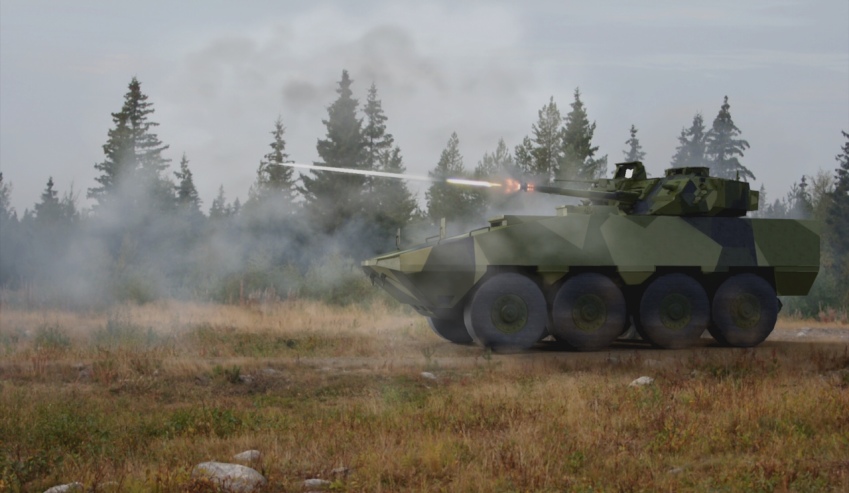South Australian Minister for Defence Industries Martin Hamilton-Smith has told Defence Connect the state is unlikely to be chosen as the build location for the LAND 400 military vehicles.
While Rheinmetall and BAE Systems Australia are still battling it out to secure the coveted contract, the battle to secure the build site appears to be down to two, with Victoria and Queensland shaping as the likely winners.
In February this year, Rheinmetall shortlisted Victoria and Queensland as its preferred sites for the build if the company is selected by the government, leaving SA's hopes with BAE Systems. A spokesperson for BAE told Defence Connect the company is continuing to assess different states for its preferred manufacturing location and that no decision has yet been reached.
But Minister Hamilton-Smith said, despite the strong business case put forward by the SA government, correspondence from the bidders has suggested it is improbable the state will be used as the build site for the next generation of Armoured Fighting Vehicles (AFV).
"South Australia put forward a compelling case to both bidders for LAND 400 phase 2, which clearly articulated the many benefits of basing operations here in South Australia, including the fact that our defence industry and skilled workforce has delivered the most complex defence projects ever undertaken in this country," said Minister Hamilton-Smith.
"Whilst feedback from the bidders indicates that the site of manufacturing operations will not be based in South Australia, we have a very strong and capable industry which we are committed to supporting as part of the supply chain. The South Australian government will also continue it’s close and productive relationship with BAE Systems, noting their corporate headquarters and significant presence in the state."
South Australia's bid for the program was backed by a support package from the state cabinet and included:
- a Defence managed Land Integration and Innovation Centre, a controlled environment for monitoring, fault rectification, upgrade integration and testing of land combat system elements and links to an upgraded Combat Training Centre at Cultana and national simulation network;
- a Defence project and sustainment office (starting with LAND 400);
- a purpose designed manufacturing and sustainment facility (to build, integrate, sustain and upgrade LAND 400 vehicles);
- two additional purpose designed manufacturing and sustainment facilities to support other major land combat system projects;
- a supplier precinct for small and medium businesses supporting other elements of the land combat system;
- a common-user industry proving ground including test track, weapons and sensor alignment facility and NATO-standard obstacles; and
- training facilities to help companies develop the trade skills necessary to support the land combat system.
When the tenderer and state are eventually selected, questions will be asked on whether the decision was based on the best offer from the different states, or if the project has fallen victim to political games.
Earlier this year, it is believed Victorian representatives within the Turnbull government lobbied Defence Industry Minister Christopher Pyne to select Victoria for the build over his home state of SA, which has already won the $50 billion submarine contract.
After the state was shortlisted by Rheinmetall in February, Victoria Minister for Industry and Employment Wade Noonan said, "Victoria is Australia's home of military vehicle manufacturing and we are doing everything we can to maintain our world-class reputation.
"The LAND 400 Phase 2 project is worth billions to our economy and we'll continue working to secure this contract for Victoria."
Victoria has previously been the home of design and manufacture of other military vehicles including:
- Rheinmetall's MAN Military Vehicles and Supacat;
- Thales' Bushmaster and Hawkei protected mobility vehicles; and
- BAE Systems' M113 Armoured Personnel Carrier Upgrade Program.
The LAND 400 program is currently in Phase 2 – the Risk Mitigation Activity (RMA).
Defence said LAND 400 Phase 2 will acquire 225 CRVs and modernise the Army’s AFV capability, providing mounted support to Defence operations for decades into the future. The primary role of the CRV will be to perform ground-based reconnaissance and counter-reconnaissance.
BAE Systems has put forward the Patria AMV35 and Rheinmetall has proposed the Boxer CRV. Three vehicles from each tenderer will be extensively tested to assess their protection and other capabilities. The outcomes from these tests will be used by Defence to undertake a final evaluation of each tender’s proposal. Delivery of the 8x8 CRV will begin from 2020.
The estimated cost of the program is between $14 and $20 billion for acquisition, making it the biggest ever in the Australian Army's history.








